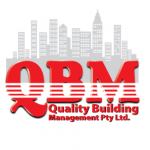Asbestos Management Plan
For over a century, asbestos products have infiltrated hundreds of Australian industries and buildings. Asbestos fibre is a known carcinogen, and is virtually everywhere in the country. More people per capita have died from asbestos related disease in Australia than in any other nation. New legislation requiring Asbestos Management Plans (AMP) in non-residential buildings may be too little too late for many, but it is better late than never for those who must live and work where deadly asbestos containing material (ACM) was used during construction.
Use and import of asbestos products of any kind was banned in Australia on the last day of December, 2003, a belated effort to stem the rising asbestos fatality rate. An Asbestos Management Plan (AMP) is now required for non-residential buildings constructed before this date. Primarily a strategy for training maintenance crews in safe asbestos work practices in order to minimise exposure to contractors, the AMP also protects health and safety of all who come in contact with such properties.
Each building AMP establishes a list detailing location and type of all asbestos containing material (ACM). The Plan evaluates condition and exposure risk of the asbestos and determines inspection routines and removal or sealing necessary to ensure human safety. Licensed contractors who are trained and certified in asbestos safety specialize in this work.
Several steps put the Plan into action:
- Survey all non-residential buildings for asbestos
- Establish a register listing location, type, condition, and associated risk of all ACM in the building (Asbestos Materials Report and Register, AMRR)
- Clearly label all ACM in the building
- Schedule annual inspections of designated areas
- Educate all personnel about asbestos
- Implement a Full Work Plan for ongoing safety of staff
The Plan will determine how to reduce human exposure, either by removal or sealing of friable or damaged ACM, and educate those working in these areas to avoid exposure caused by disturbing ACMs. The need for sampling, air monitoring, and remediation is also addressed in protocols specific to each building.
Education and training prepares all employees to safely deal with asbestos. Avoiding exposure to ACM is promoted by informing employees of any work that will disturb asbestos. This includes sanding, cutting, drilling, hammering, power washing, use of compressed air, moving, and similar activities.
Warning signs and ACM labels prepare employees and visitors to be aware of possible ACM hazards. Personnel who work on projects involving asbestos are instructed in safe procedures to complete necessary tasks. Guidelines given here are not comprehensive, and your first course of action should be to contact a licensed asbestos expert.
Compliance with the AMP regulations can be daunting, but procrastination is not an option. Call QBM today for expert consultation on your situation.
Resources
1. National Code of Practice for the Management and Control of Asbestos in Workplaces (NOHSC:2018(2005)
2. Workplace Health and Safety Regulation, 2008:Part 13, Division 3
3. Asbestos Management Plan, Asbestos Industry Association (asbestosindustry.asn.au)
4. http://www.news-medical.net/news/20100628/Getting-rid-of-asbestos-in-Australia.aspx
Asbestos Management
Although asbestos-containing materials (ACM) were once widely used in a variety of building products such as insulation, piping, and tiling, their use has been curtailed since the 1980s due to the widespread health hazards they pose.
Specifically, asbestos exposure has been linked directly to lung cancer and asbestosis. Because symptoms from asbestos exposure may not surface for 20 years or more, it is highly important to develop an asbestos management plan for your building to either abate any ACMs present or eliminate them altogether.
Learn your building’s history
If your home or building was manufactured before 2004 and has not undergone any serious revisions since then, it stands a reasonable chance of containing ACMs in some of its building materials. Even if your building has undergone revisions including asbestos inspection, abatement, or removal, it is very important as a building owner to be sure you have proper documentation of all ACMs in your building and to know what work—if any—has been conducted to contain or eliminate those materials.
Inspection
Before undertaking a remodelling or demolition job of any kind, it is extremely important to have your building inspected for ACMs. If you do not, and construction/demolition crews encounter an ACM or suspected ACM, you could be liable for any damages that result from their unprotected exposure. If you or an inspector discover any materials that you suspect might contain asbestos, the material will have to be thoroughly tested.
Planning
Once you have determined the extent, if any, of ACMs in your building, you will need to develop a plan on how to address these potential hazard areas. Here are some items worth considering:
- If the material is damaged or friable, it will have to undergo standard abatement procedures, which entail either sealing the material to prevent asbestos fibres from getting into the air or removing the material entirely.
- If the material is undamaged or non-friable, no action may be necessary. ACMs in good condition and in little danger of becoming damaged pose very little threat to the public at large. In this scenario, you will need to properly document the ACMs’ existence, but you likely will not need to worry about abating the material.
Operations and Maintenance Programs
Just because your ACMs do not pose any immediate threat does not mean that they can be ignored outright. It is greatly to your benefit to develop an Operations and Maintenance Program to ensure that the material remains in good condition as long as you’re responsible for the building.
Schedule periodic inspections of the materials. Once identified, these follow-up inspections are rather easy to conduct, and should not hamper the operations of your building. Create a written building’s operations plan as well to help maintenance workers avoid accidentally damaging or otherwise disturbing the ACM. Aside from this being good policy, you will greatly reduce your own liability should someone accidentally disturb these materials.

